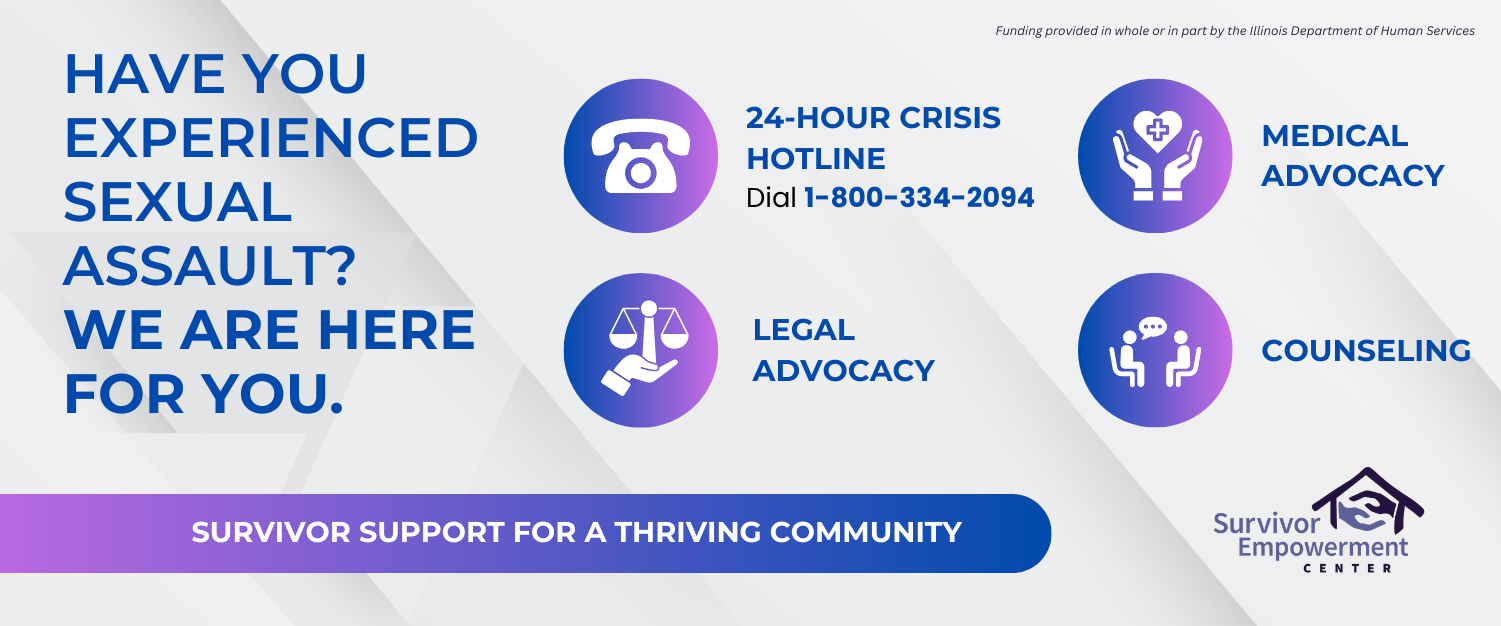SIUC minority ballplayers rank among lowest in graduation rates
April 30, 1998
by Mikal J. Harris
SIUC is abysmally unsuccessful in graduating its African-American male basketball players and needs to re-evaluate its eligibility requirements, an administrator and former Saluki says.
Eleven percent of African-American male basketball players entering as freshmen from 1987 to 1990 graduated from SIUC within six years. All of the University’s other basketball players entering during that period graduated within six years of their initial enrollment.
Advertisement
In March, SIUC made its first appearance on Emerge magazine’s fourth annual list of 50 universities with the worst record in graduating African-American basketball players. The “Bottom 50” list and its accompanying article, “Nothing But Fouls,” used the 1997 National Collegiate Athletic Association Graduation Rates Report to rank SIUC 40th among Division I schools in this category.
The belief that big-time college sports programs use African-American athletes to make money but do little to ensure that these athletes receive degrees has been questioned by critics.
On the other hand, many notable African-American male student-athletes opt to leave college early to pursue big money in the pros. The University of North Carolina’s Antawn Jamison, the NCAA’s Player of the Year, announced similar intentions Monday.
But as money-making college sports powerhouses are bombarded with these concerns, some institutions with smaller sports programs seem to have escaped addressing these problems directly.
SIUC belongs to that group of institutions, but some within the University finally appear to be facing the statistics.
SIUC’s Intercollegiate Athletics Advisory Committee passed a resolution urging the Department of Intercollegiate Athletics to improve the academic performance and graduation rate of the University’s African-American male student-athletes.
Harvey Welch, vice chancellor of Student Affairs, was faxed a copy of Emerge’s findings after its publication. He was not pleased with SIUC’s designation, but this disappointment deeply troubled him on a more intimate level.
Advertisement*
Welch became SIUC’s first African-American basketball player in 1951. Also the father of former Saluki basketball four-year letterman and alumnus Brian Welch, he has a number of concerns about the academic progress of SIUC’s African-American male basketball players.
“I’m proud of this school, but I don’t think we’ve done a good job with our black male basketball athletes in terms of getting them degrees,” he said. “These kids are intellectually capable of graduating. I don’t think black athletes are dumber now than I when I was here. I think it’s exactly the reverse because they are exposed to more.
“I know the black athletes aren’t doing as well as they should, and I have a problem with a system that allows a kid to be eligible for four years but does not allow them to graduate.”
Explanation of SIUC’s statistics
The graduation rates in the official NCAA 1997 Graduation Rates report are based on students who received an athletic scholarship and who graduated within six years of their initial college enrollment. Graduation rates of transfer athletes are documented in the report for comparative use.
The NCAA annually compiles and publishes graduation data for Division I institutions and evaluates this data once each decade. The Division I report is distributed to high schools, higher education leaders, members of Congress and members of the media.
The graduation rates are the most important statistics we have to present to the NCAA, said Leo Gher, chairman of the athletics advisory committee. We have to be certified in order to be in the NCAA Tournament and to reap the financial benefits we receive as members.
The 1997 report shows 39 percent of African-American male athletes entering as freshmen from 1987 to 1990 graduated from SIUC within six years. On the other hand, 59 percent of white male athletes entering as first-time freshmen from 1987 to 1990 graduated from SIUC within six years.
Administrators caution that all student graduation rates can be affected by a number of factors, but Division I student-athletes nationwide still manage to enjoy a higher graduation rate than their non-athlete student peers.
Student-athletes who entered college in 1990 graduated at a rate of 58 percent compared to a 56 percent rate for all students. This is the highest percentage differential between student-athletes and the general student population since 1986.
In general, student-athletes entering in 1990 graduated at rates slightly higher than non-athlete students of their same racial and gender group. African-American male student-athletes graduated at a rate of 43 percent, compared to a 33 percent graduation rate for the entire African-American male student population.
But once those comparisons are narrowed to examine African-American and white male basketball players, the numbers show that SIUC’s unbalanced student-athlete graduation rates follow a disturbing national trend.
Thirty-nine percent of African-American male basketball players entering college nationally in 1990 graduated by August, 1996, compared to 58 percent of white male basketball players.
None of the African-American male basketball players entering SIUC during the 1990-91 school year graduated by August 1996. Like Welch, Seymour Bryson, director of SIUC affirmative action, believes the low numbers result from a higher priority on athletics than academics.
Society has to stop being hypocritical, he said. We tell coaches that we value education, but at the same time we look at fan attendance and game loss records.
I know very few coaches fired for low graduation rates, but I have seen many fired for losing records and poor fan attendance.
Like Welch, Bryson also is a former SIUC African-American male basketball players. Both believe that their younger peers can excel both on and off the court. They are members of the SIUC Sports Hall of Fame a prestigious fellowship initiated by Bryson 20 years ago that now includes 33 basketball players.
Bryson, who amassed 1,244 career rebounds from 1955 to 1959, is the University’s career rebounding leader. He also ranks sixth on SIUC’s list of all-time career scorers with a total of 1,535 points.
But unlike the vast majority of recent African-American male basketball players, Bryson took full advantage of his SIUC education. He earned a degree in sociology in 1959, a master’s degree in rehabilitation counseling in 1961, and a doctorate in educational psychology in 1972.
Bryson believes today’s African-American male basketball players are capable of the same achievements if not more. He said the problem lies with the conditioning of those athletes to believe in a future of professional athletics, and that coaches are pushing athletes to focus on that hard-to-attain goal instead of academics.
It’s up to the coaches to help culture students into academics, he said. They make them believe they have an opportunity to make it in basketball. They make it an end rather than making it a means to an end, when the goal is to leave an institution with a degree.”
As SIUC’s first African-American male basketball player, Welch said earning a degree was foremost on his mind. And after comparing SIUC’s basketball athletes with those at other institutions over the years, Welch believes African-American male basketball players should not be duped into believing their years at SIUC will lead them to an NBA career.
“We don’t produce professional athletes in large numbers,” he said. “We don’t get the Mr. Basketballs of Illinois and Indiana they don’t come here. We get the athletes with less talent, we don’t get the kids who go to the NBA. If we compete with North Carolina for a recruit, 100 percent of the time that recruit will choose North Carolina.
“We can make baccalaureate degree and master’s degree holders out of African-American male basketball athletes, but we can’t make them professional athletes. They’re going to be limited without the degree, and I would feel the Athletic Department should encourage students to get the degree.”
Agreeing with Welch’s assessment, Bryson said SIUC’s African-American male basketball players could find more gratifying career opportunities just by seeking the advice of those who once stood in their place.
“For most kids coming out of a place like SIU, there’s a slim chance of going into professional basketball,” he said. “Every kid who puts on a uniform thinks about going into the NBA and most coaches push for it.
“This campus has a lot of role models that blacks could use who played ball, like myself. We could enhance their opportunity to get a good education.”
Go pro or graduate?
Despite what would appear to be sage advice from the old school, some African-American male basketball players continue to leave school early to pursue professional careers. Ex-Saluki guard Troy Hudson made the most recent attempt.
Opting out of a senior season with the Salukis, Hudson briefly played with the NBA’s Utah Jazz during the 1997-1998 season. The Saluki three-point specialist who was placed on the Jazz’s injured list in December and then cut from the team later averaged 9 points per game with the Continental Basketball Association’s Sioux Falls Skyforce.
In spite of local media doubts, Chris Carr’s decision to skip his senior year and declare himself eligible for the 1995 NBA draft was more successful. He was drafted by the Phoenix Suns late in the second round, and now plays for the Minnesota Timberwolves.
Former African-American male basketball players Ashraf Amaya and Marcus Timmons also tried their luck in professional basketball without benefit of an SIUC degree. Timmons never made it to the NBA, but debuted professionally with Italy’s Olympia Pistola in 1995. After brief stints with the NBA’s Vancouver Grizzlies and Washington Bullets, Amaya a former Missouri Valley Conference Player of the Year no longer is in the NBA.
On the other hand, when UNC’s highly touted Jamison announced his intentions to go pro Monday, he said he was assured by coaches and NBA teams that he would be among the first five players selected in the NBA draft.
He also revealed that he will be able to graduate ahead of his senior class this year by enrolling in summer school.
Former SIUC basketball coach Rich Herrin graduated 85 percent of his basketball players during his 13 years at SIUC including Welch’s son Brian, now an accountant. But before he resigned as coach earlier this month, Herrin explained that he strongly supported the decisions of the SIUC players all of whom were African-American who decided to leave school early to go pro.
These guys have an opportunity, and I’m not going to take that away from them, he said. They can’t play forever because their bodies can only last for so long.
Jim Hart, director of SIUC Intercollegiate Athletics, said he encouraged Carr to stay at the University and earn a degree, although Carr chose to do otherwise. Although he agrees that African-American male basketball graduation rates “are not what we’d want them to be,” he still stands staunchly behind Herrin’s encouragement of other professional hopefuls who left SIUC without degrees.
What’s Herrin supposed to do tell them not to leave because they need to graduate and finish a degree?” he asked shortly before asking for Herrin’s resignation this month. “You can’t dangle an opportunity like professional basketball in front of them and not give them a chance.
Difficulty of being a student-athlete
For every African-American male athlete who decides to go pro, there are others who take different routes. For all basketball players who remain at SIUC, participating in a marquee athletic program is difficult. They may save tuition expenses, but they amass a stressful routine.
Student-athletes have a real tough time, Gher said. People think they have a free ride, but black student-athletes have a very isolated lifestyle.
They get up at six, lift for two hours, attend class like a regular kid, then at 3 they practice, eat at 6 and then go to a required study table. It’s very isolated and that doesn’t even include travel.
Saluki forward James Jackson, a junior in graphic design from St. Louis, has balanced his dream of pursuing a career in visual communication with the rigors of playing college basketball since 1995. But as an athlete, he does not want to share the fate of the majority of his African-American peers. He plans on earning his bachelor’s degree in 1999 or 2000.
Jackson, a two-year letterman and top reserve, said he never has had any problem with keeping his grades up. This may be because of the positive reinforcement he said he found in former coach Rich Herrin and his teammates.
The coach will tell you to leave practice if you have class, he said. We all get on each other, too. If someone is not attending class, he usually gets made fun of.
But Bryson believes this reinforcement has not been as effective for the African-American male basketball players who have not graduated.
By doing what you’re here for, you should be attending class and meeting expectations, he said. Those individuals who are in charge of these students are not doing what they’re supposed to do. The players are still allowed to compete. That’s where I have some questions.
Help within the Athletic Department
There is a more formal approach in finding assistance for student-athletes within the Athletic Department. Incoming student-athletes are required to enroll in The Successful Student, a two-hour course taught by Athletics Department staff members. The course covers topics including time management, career development and NCAA guidelines.
A team of four athletic coordinators fielded more than 3,200 calls and visits from Saluki athletes in fall 1996 alone. Coordinators are available to help student-athletes gain priority registration with University academic advisors, select classes and evaluate instructors. They also monitor student-athletes in classes and assist student-athletes with free tutoring, study tables and time management. Student-athletes are not required by the University to use these services, but student-athletes with cumulative grade-point-averages below 2.25 are required to attend the two-hour evening study tables.
These efforts to aid student-athletes serve a dual purpose by helping the entire Athletic Department. The University is in the midst of studying the program to ensure its NCAA certification.
Achieving a departmental graduation rate at least 15 percent above the graduation rate of SIUC undergraduates is an important Saluki Athletics goal. That aspiration was realized in the 1997 graduation-rates report. Fifty-six percent of Saluki athletes entering in 1990 received degrees by August, 1996 compared to 39 percent of non-student-athletes a rate 17 percent lower than that of student-athletes.
Another Athletic Department goal is for 75 percent of student-athletes entering SIUC to graduate after using four years of eligibility. Eighty-five percent of Saluki student-athletes met that goal, according to the 1997 report.
Improving the graduation rates of African-American male basketball players like Jackson is not one of the expressed goals of the Athletic Coordinators Office, but measures are being taken to help the academic performance of SIUC’s minority athletes in general.
One way advisory committee members said its resolution to improve African-American student-athlete achievement could be accomplished would be requiring coaches to give maximum support to efforts to improve class and study table attendance.
Nancy Bandy, assistant director of SIUC athletics, said maximum support of those academic aids had been difficult for SIUC’s men’s basketball program for a variety of reasons.
“There have been problems with men’s basketball players’ class attendance and study table attendance, and nothing has been done about it,” she said. “It’s a lack of discipline although there are some coaches who require class attendance. Some players have a notion that they will go pro.”
Bandy said the Athletic Department also is exploring other options. The department seeks to add more minority coordinators. Two African-American coordinators are now employed.
Bandy says this strategy will work only if academic coordinators realize their ultimate duty to student-athletes.
Some believe that having role models of the same ethnicity will make students perform better,” she said. I agree with it overall, but it depends on the individuals who are hired. If you hire someone who thinks winning overall is important and not academics, that’s not good.
A look at the 1997 survey of African-American life at SIUC provides some insight into general African-American students’ decisions to remain at SIUC. Thirteen percent of African-American students surveyed in 1997 said the opportunity for intercollegiate athletics was very significant in their decision to stay at SIUC. Thirty-six percent of these students said the pursuit of an academic degree program was very significant in their decision to remain at SIUC.
Athletic Advisory Board regulations seek to place African-American male basketball players goals similar to that of their non-athlete African-American peers. This measure may have negative effects on the team’s future success, but he said it is more important that his athletes are achievers in the classroom.
If a student’s grades are down, he has to get them up before the following semester or he can’t play, Hart said. It makes it hard to recruit students because they don’t have as much leeway here as they would at another university.
Though our athlete participation may decrease, it will show to the students the significance of an education, he said. Some may go on to pro ball but they’ll go on with grades behind them.
But Welch said he has a better solution for low graduation rates of African-American male basketball players.
“Make them eligible on a semester-to-semester basis,” he said. “And I think Athletic Department administrators should come up with a way to have the student-athletes graduate within four years. What’s six years? My son played here and graduated in four years it can be done.
And Welch believes this plan can be implemented if SIUC’s future men’s basketball coach also places a higher priority on the team’s academic success.
“We are now recruiting a men’s basketball coach, and one of his responsibilities would be to graduate athletes period. This doesn’t have to be just a black and white problem.
“And all you have to do is just require it 15 hours, pass or don’t play.”
Advertisement









